Navigating Between Apps and Tenants
Learn to navigate application-level and tenant-level configurations by exploring the Wristband Dashboard layout.
Application View
After logging into Wristband, you'll land on the home page, where you can create applications. Once an application is created, access its "Application View" by clicking its tile on the Home page or selecting it from the Application Switcher menu to begin configuration.
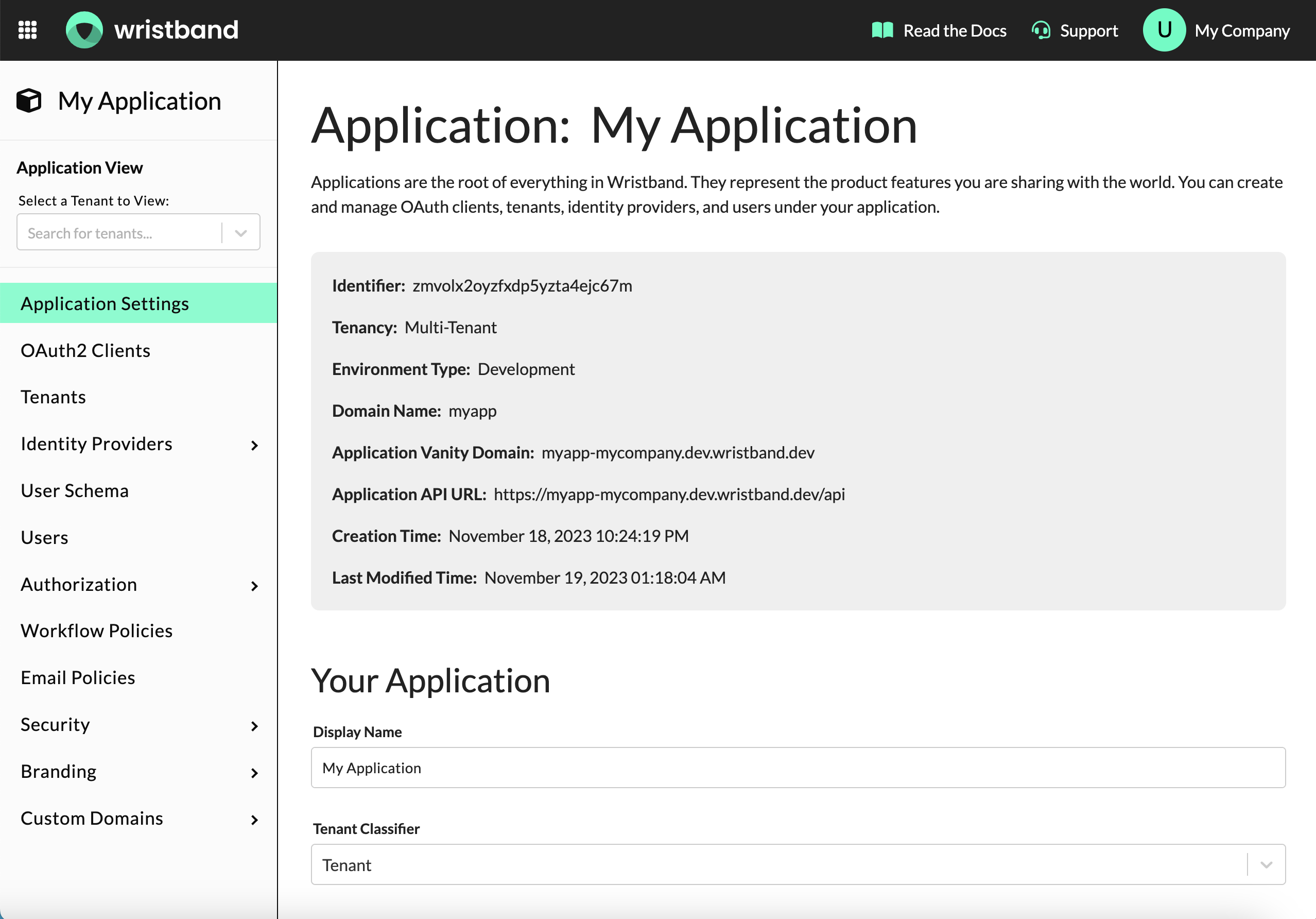
Application View: Configure settings all tenants will inherit by default.
Wristband's Tenant Override System organizes applications and tenants hierarchically within the dashboard. In the Application View, the side navigation menus focus solely on application-level entities, meaning any changes made affect all tenants under that application. For example, updating Page Branding for Wristband-hosted auth pages applies consistently to both the application-level login page and all tenant-level login pages, which inherit the same branding settings.
Tenant View
After creating an application in Wristband and provisioning at least one tenant, you can access the "Tenant View" for any particular tenant. Here, you can make tenant-specific configurations without impacting other tenants in the application. Tenant View visually mirrors the Application View in terms of layout and menu options, and the side navigation menus apply exclusively to the selected tenant.
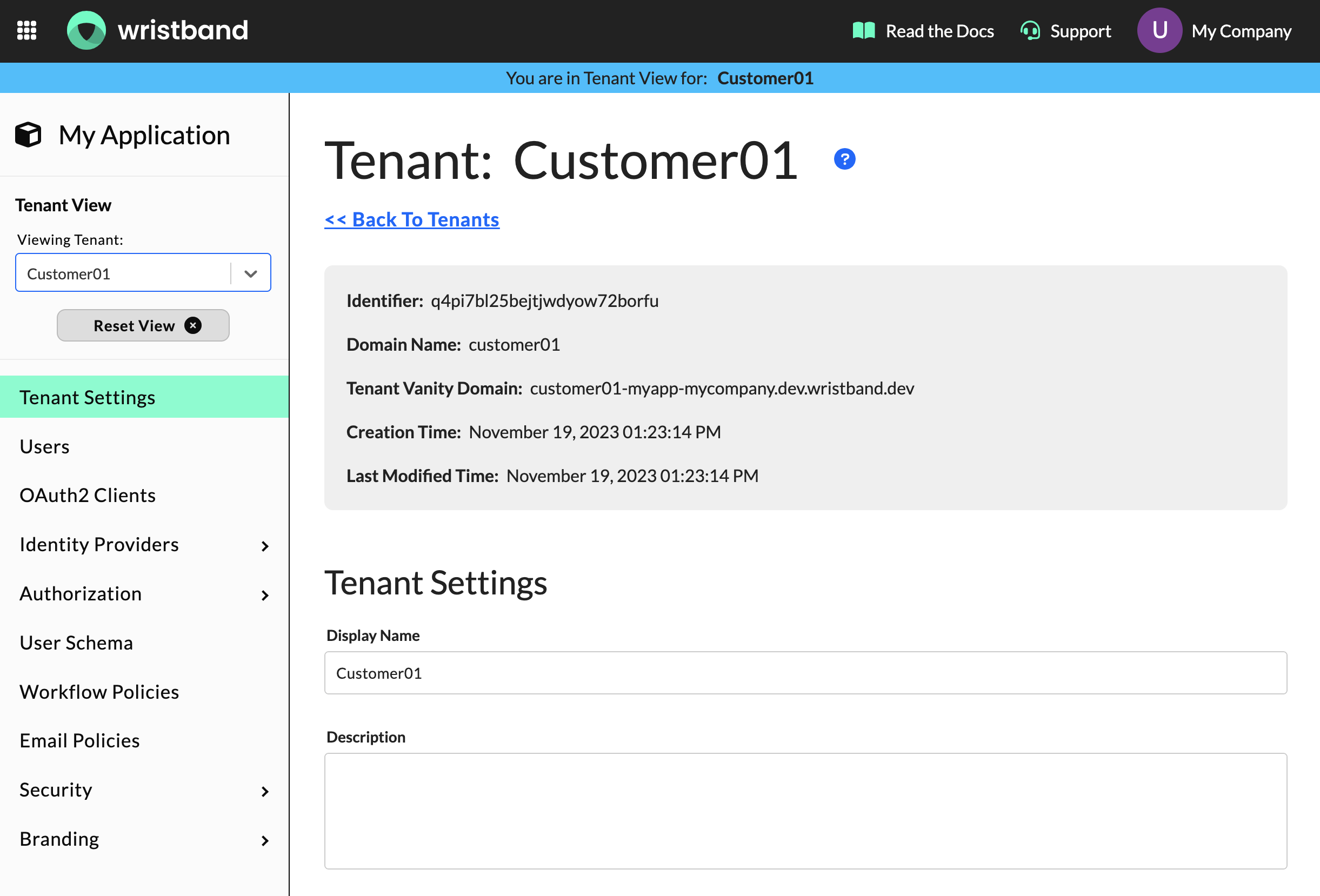
Tenant View: Configure settings that only affect one tenant.
Tenant View IndicatorThe blue banner below the navbar indicates your current tenant and confirms you're in Tenant View.
Navigating the Hierarchy
There are a couple different ways you can navigate going between the application and its various tenants.
Tenants Table
In the Application View, navigate to the "Tenants" menu in the side navigation. You'll see a table with all tenants in your application where you can search for a tenant to configure. To access Tenant View, simply click the corresponding row for that tenant.
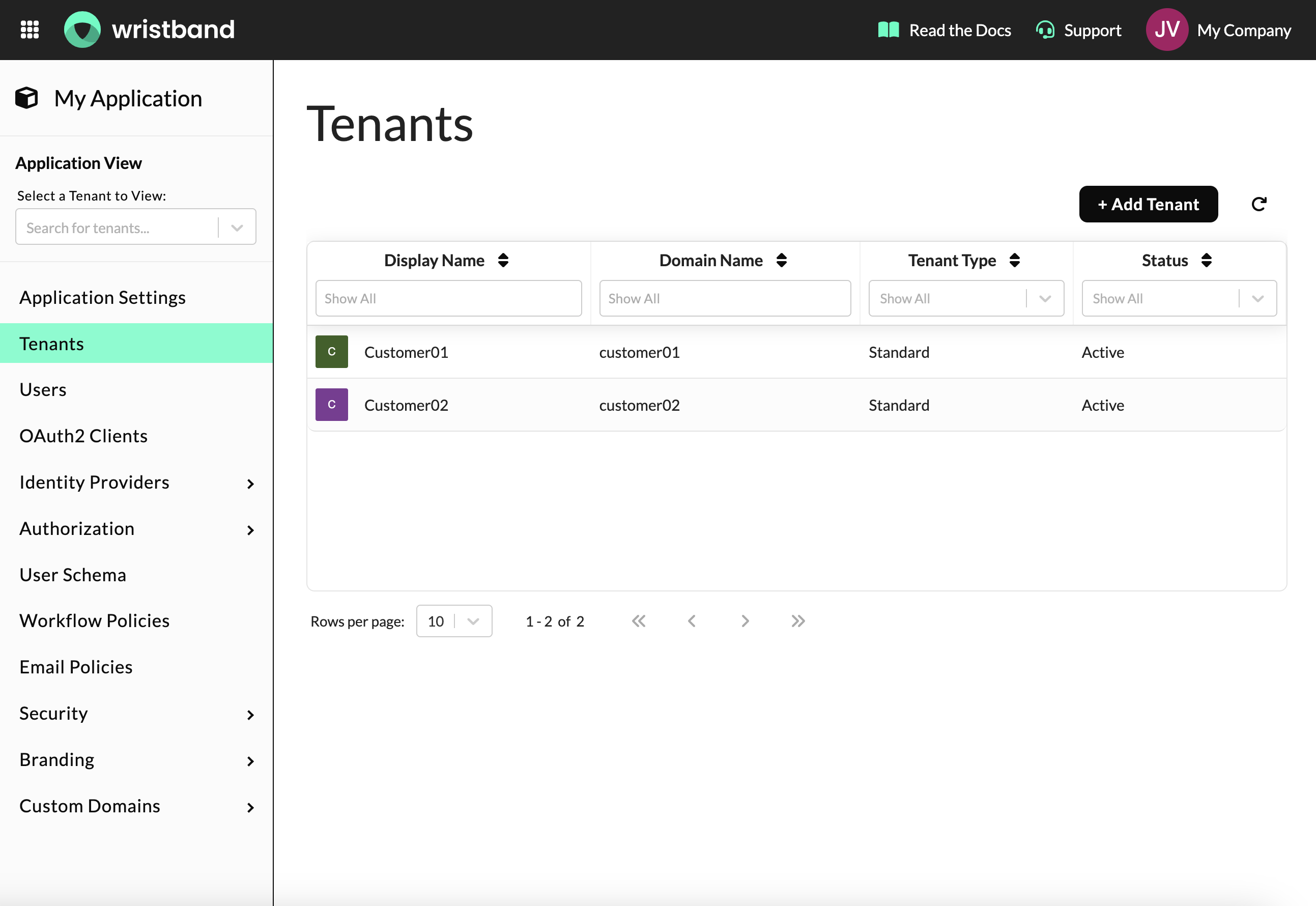
Tenants Table: Search on all tenants within your application.
Selecting a tenant from the table opens the Tenant Settings page for that tenant. At the top of the page, a link lets you return to the Tenant table in Application View.
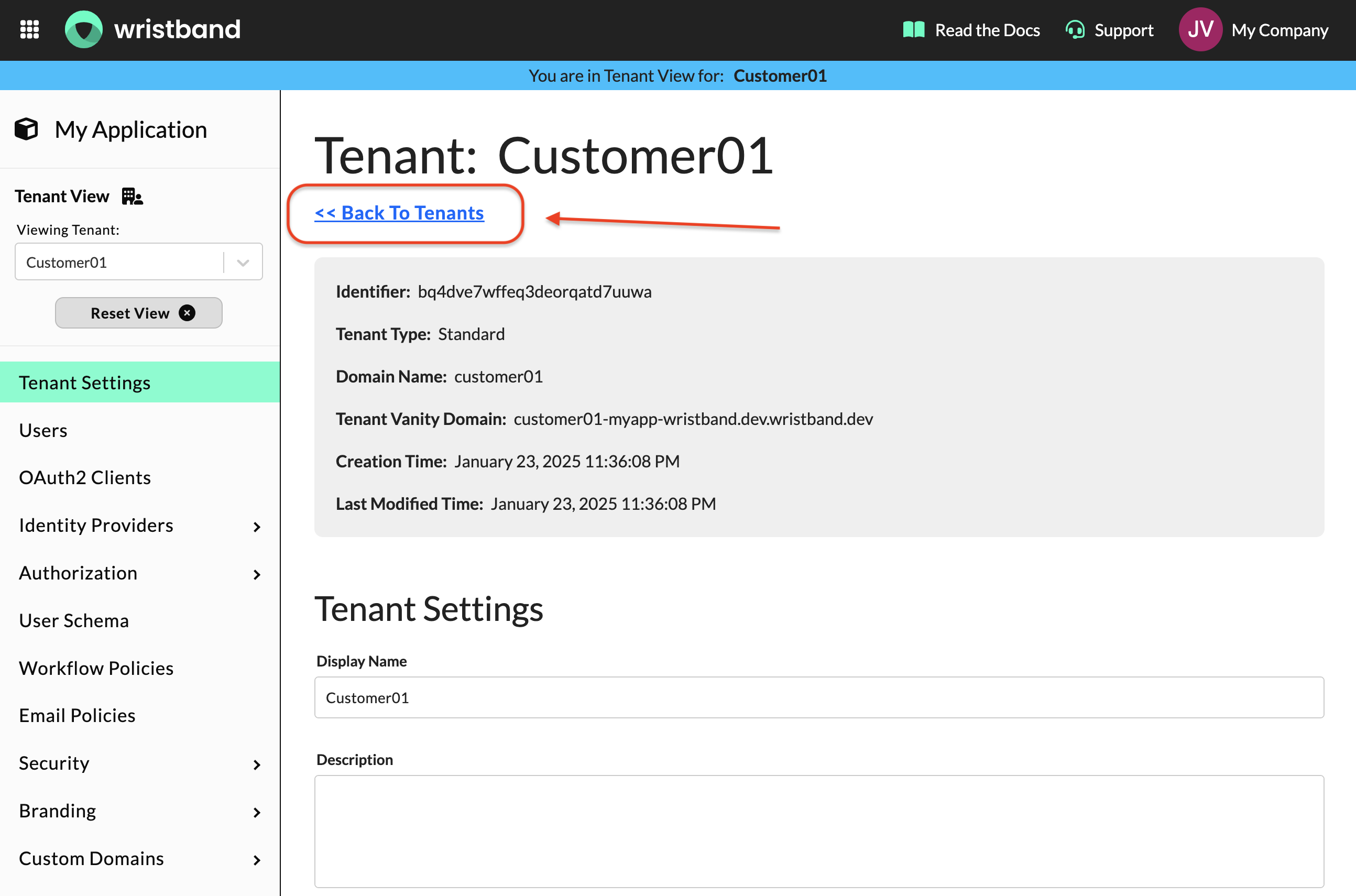
Tenant View: The Back link returns you to the Tenants table in Application View.
Tenant View Selector
The type-ahead Tenant View Selector in the side navigation lets you choose which tenant to configure. Selecting a tenant from the dropdown opens its Tenant Settings page.
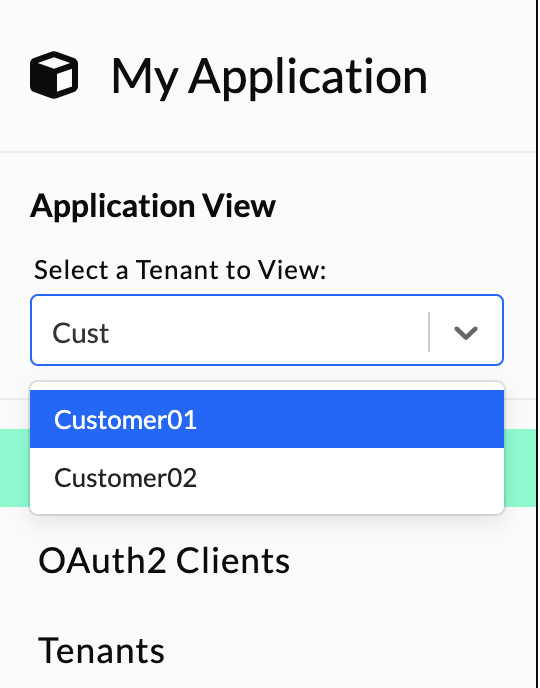
Tenant View Selector: Choose a tenant to configure from the side navigation.
In Tenant View, the Tenant View Selector also offers an option to return to Application View. Clicking this takes you to the Application Settings in Application View. Alternatively, you can also switch to configuring a different tenant within that application by choosing a different tenant in the Tenant View Selector.
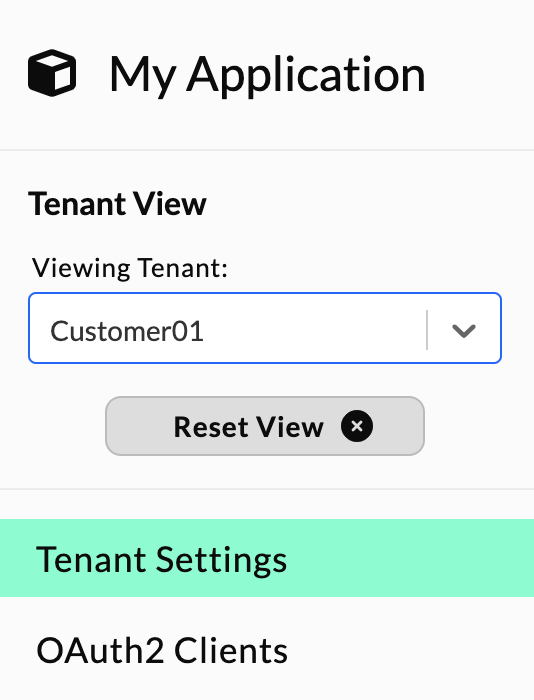
Tenant View Selector: You can return to Application View from the side navigation.
Differences in Configurable Entities
Most entities can be created and configured in both Application View and Tenant View, with some exceptions. Certain entities are exclusive to the Application level, while others are specific to the Tenant level.
- OAuth2 Clients: Currently, only Machine-to-Machine (M2M) OAuth2 Clients can be created at the Tenant level. Wristband plans to support additional Tenant-level OAuth2 Client types in the future. For now, all other types can be created at the Application level.
- Enterprise Identity Providers: Enterprise single sign-on (SSO) identity providers can only be configured at the Tenant level and not at the Application level. This is due to the strict 1-to-1 mapping requirement between your customer's organizational user directory and an SSO integration with Wristband.
- Permissions and Permission Boundaries: Permissions, whether custom or predefined, and permission boundaries can only be exclusively defined at the Application level, not the Tenant level. This distinction arises from the fact that these entities are determined by the developers of your application, not your customers.
- Token Settings: Wristband signing keys for verifying and signing JWTs, as well as custom token claims, are currently configured at the Application level, not the Tenant level. Support for Tenant-level signing keys and custom token claims may be introduced in the future.
- Bot Detection Policies: The ability to configure bot detection policies is currently limited to the Application level only.
Updated 2 days ago